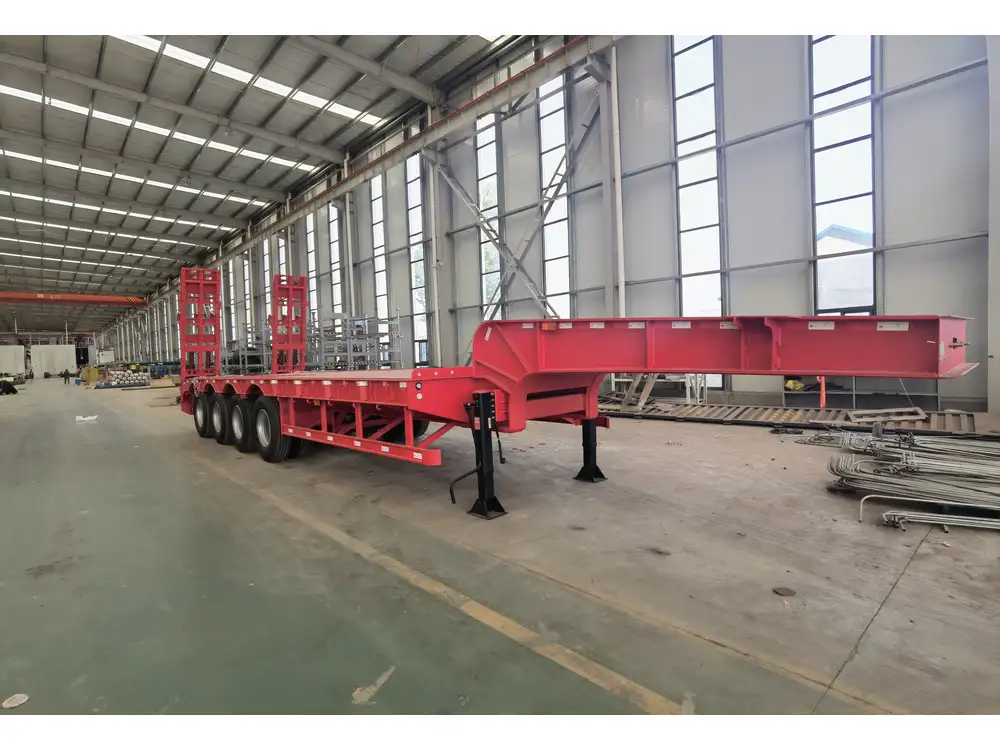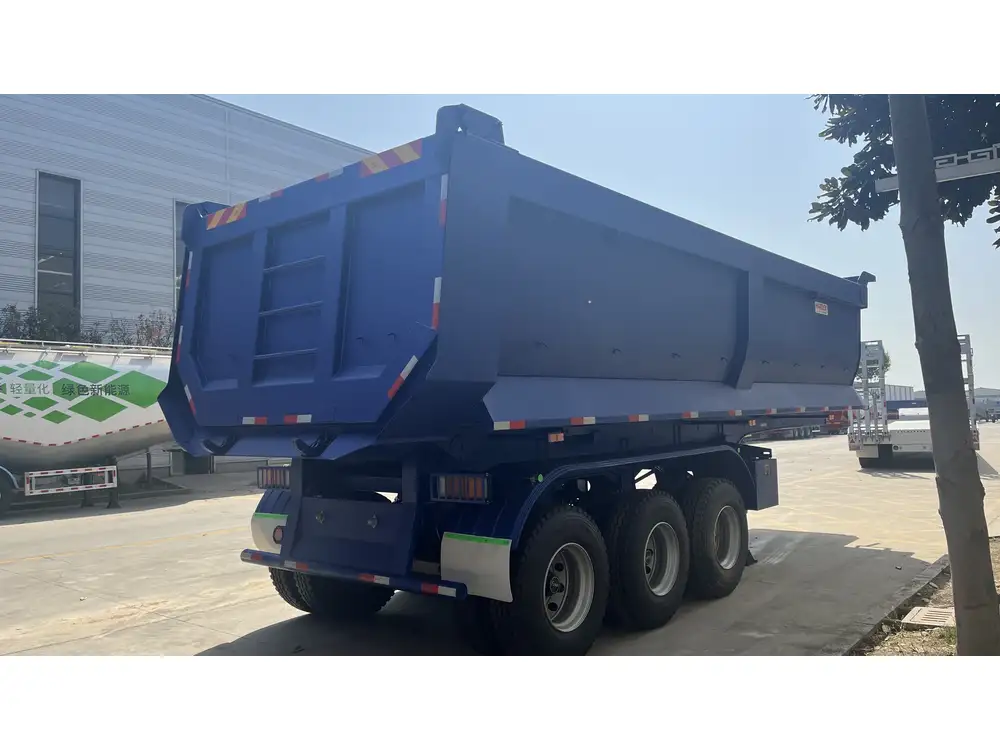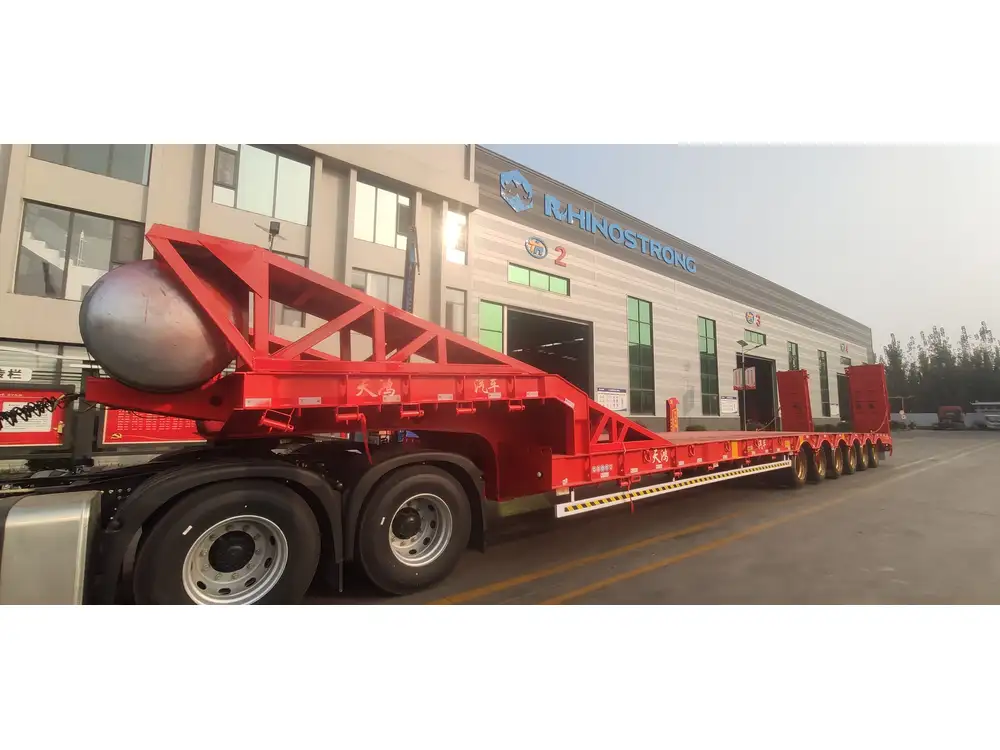Introduction to Semi-Trailer Weights
When considering commercial trucking and logistics, one of the paramount considerations is the weight of the semi-trailer. Knowing how much a semi-trailer weighs isn’t just an incidental detail; it’s fundamental to operations in the transportation industry. The weight of semi-trailers can significantly influence cargo capacity, fuel efficiency, and compliance with legal weight restrictions. In this guide, we delve into the various aspects of semi-trailer weights, providing insightful analysis, comparison tables, and critical considerations for operators and logistics professionals.
The Average Weight of Semi-Trailers
To grasp the complexities surrounding semi-trailer weights, it’s essential first to understand the general weight ranges. A standard semi-trailer typically weighs between 10,000 to 30,000 pounds (4,500 to 13,600 kg) when empty, with variances based on trailer type and configuration.

Empty Weight Classification
Lightweight Trailers:
- Weigh 10,000 – 15,000 lbs (4,500 – 6,800 kg).
- Examples: Vans and some flatbeds.
- Ideal for maximizing payload capacity.
Standard Trailers:
- Weigh 15,000 – 20,000 lbs (6,800 – 9,000 kg).
- Common for general freight transport.
Heavy-Duty Trailers:
- Weigh 20,000 – 30,000 lbs (9,000 – 13,600 kg).
- Examples: Specialized equipment haulers.
Factors Affecting Semi-Trailer Weight
Understanding how much a semi-trailer weighs involves analyzing various contributing factors. Below are some key elements that can influence the weight:
1. Trailer Type
Different types of semi-trailers serve distinct purposes and consequently have different weight profiles. Common types include:
- Flatbed Trailers: Versatile in carrying irregular loads; typically on the lighter side.
- Reefer Trailers: Refrigerated trailers, heavier than flatbeds due to insulation and refrigeration units.
- Tankers: Designed for transporting liquids; weight varies significantly based on tank size and liquid density.

2. Material Composition
The materials used in manufacturing trailers can significantly affect their weight:
- Aluminum: Lightweight and corrosion-resistant, leading to a lower overall weight.
- Steel: Heavier, but offers durability and greater strength, often used in heavier-load applications.
- Mixed Materials: Some manufacturers use a combination of materials to optimize strength and weight.
3. Design and Configuration
Semi-trailer designs, including axle configurations and dimensions, can impact weight:
- Number of Axles: More axles distribute weight better but add to overall weight.
- Length and Width: Longer and wider trailers tend to weigh more due to larger structural requirements.
4. Accessories and Features
Additional features incorporated into trailers for functionality can also affect weight:
- Lift Gates: Add weight but ease loading and unloading.
- Interior Features: Insulation in reefer trailers leads to greater weight.

Legal Weight Regulations for Semi-Trailers
Understanding weight regulations is crucial for anyone in the logistics or transportation industry.
The Federal Bridge Formula
The Federal Bridge Formula is implemented to determine maximum allowable weight limits according to the number of axles and spacing. This formula helps in preventing wear and damage on highways and bridges. The equation is:
[ W = \frac{LN}{N-1} + 12N + 36 ]Where:
- ( W ) = Maximum weight in pounds
- ( L ) = Distance in feet between the outer axles of any group of two or more consecutive axles
- ( N ) = Number of axles in the group
Weight Limits by State
Each state in the U.S. has its regulations concerning the maximum allowable weight that can be transported. Most states adhere to a maximum Gross Vehicle Weight Rating (GVWR) of 80,000 pounds (36,287 kg) on interstate roads, including the weight of the semi-trailer, cargo, and tractor.
| State | Maximum Trailer Weight (GVWR) |
|---|---|
| California | 80,000 lbs (36,287 kg) |
| Texas | 80,000 lbs (36,287 kg) |
| Florida | 80,000 lbs (36,287 kg) |
| New York | 80,000 lbs (36,287 kg) |
| Illinois | 80,000 lbs (36,287 kg) |
Understanding these limits is critical for avoiding costly fines and ensuring the safety of road infrastructure.

Implications of Overloading Semi-Trailers
Operators must be acutely aware of the consequences of exceeding weight limits. Overloading can lead to:
- Increased Fuel Consumption: Heavier loads require more fuel due to increased drag and resistance.
- Higher Maintenance Costs: Excess weight accelerates wear and tear on tires, brakes, and suspension systems.
- Legal Penalties: Overweight fines can significantly impact profitability.
- Safety Risks: Increased risk of accidents due to reduced braking efficiency.
Strategies for Staying Within Legal Limits
To optimize operations and stay compliant, consider implementing the following strategies:
- Regular Weight Checks: Weigh trucks at designated scales before long hauls.
- Load Distribution: Ensure even weight distribution for improved handling and stability.
- Use of Technology: Utilize onboard weight monitoring systems to maintain real-time accuracy.
The Importance of Weight in Logistics and Planning
The weight of a semi-trailer plays a vital role in logistics planning. Here’s how proper weight management can streamline operations:

1. Optimizing Load Capacity
Knowing your trailer’s maximum load capacity allows you to optimize payloads effectively. An accurate understanding of the weight also can help in maximizing revenue by ensuring that each haul is optimally loaded.
2. Enhancing Route Planning
Weight plays an integral role in route selection. Using GPS systems equipped with weight monitoring can assist fleet managers in avoiding weight-restricted zones.
3. Reducing Overall Costs
Well-planned weight management translates into savings in fuel costs and wear-and-tear expenses on vehicles, extending both the lifespan and operational efficiency of the fleet.

Future Trends in Semi-Trailer Design and Weight Management
As technology continues to evolve, so do the principles of semi-trailer manufacturing and weight management. Emerging trends include:
1. Lightweight Materials
The introduction of advanced composite materials promises to reduce trailer weights without sacrificing structural integrity.
2. Smart Trailers
Integration of IoT technology for real-time weight tracking and monitoring could revolutionize weight management practices, allowing operators to make data-driven decisions.

3. Regulatory Changes
With the ongoing evolution of transportation laws, it’s vital for operators to stay informed about changes that may affect weight regulations and operational strategies.
Conclusion
In conclusion, understanding how much a semi-trailer weighs and the multitude of factors influencing its weight is essential for success in the transportation industry. By grasping the nuances of trailer types, materials, design, and legal regulations, operators can achieve better planning, optimize their logistics processes, and ultimately improve their bottom line. As an industry seeking efficiency and compliance, the quest for knowledge around semi-trailer weights is a pivotal step toward enhanced operational excellence.
Ensuring proper weight management not only aids in compliance with laws but also promotes safety and efficiency in the highly competitive world of logistics. Embracing technological advancements in trailer design and monitoring will shape the future, making it an exciting time to be involved in this sector.



